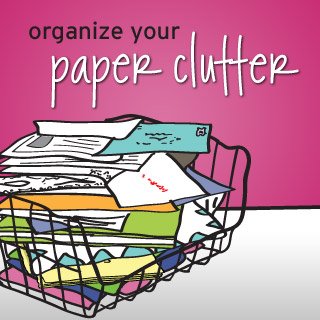5 Ways to Find Time for Essential Paperwork

In today’s fast-paced world, managing paperwork efficiently can feel like an endless battle against time. Whether it's tax documents, contracts, or personal records, the paperwork pile can seem insurmountable. However, finding time to handle these essential tasks is crucial. Here are five strategies to help you find the time and streamline your paperwork process:
1. Prioritize with a Schedule

The first step in conquering your paperwork mountain is to prioritize. Schedule dedicated time for paperwork by:
- Setting specific days and times: Reserve time on your calendar for paperwork. Early mornings or late evenings when you’re less likely to be interrupted might work best.
- Creating a recurring appointment: Treat paperwork as you would a meeting with yourself. Make it a recurring event to avoid cramming all paperwork into one overwhelming session.
- Using technology: Tools like Google Calendar or Microsoft Outlook can send reminders, ensuring you don’t forget your paperwork time.
📅 Note: Remember, the key is consistency. Even if it’s just 30 minutes a day, regular time slots help keep paperwork under control.
2. Batch Similar Tasks

Efficiency comes from grouping similar activities:
- Document sorting: Spend one session sorting documents into categories like “Bills”, “Insurance”, “Taxes”, etc.
- Actioning: Dedicate another session to actions like signing, shredding, or scanning documents.
- Data Entry: Use another time slot to enter information into electronic systems or cloud storage.
By batching these activities, you reduce the mental load of switching tasks and can focus better on each type of work.
3. Leverage Technology

Technology can be a powerful ally in the fight against paper clutter:
- Go digital: Scan important papers into a document management system like Evernote or Google Drive. This reduces physical clutter and makes documents searchable.
- Automate where possible: Use apps or software to automate regular tasks like bill payments, reminders for document renewals, or even e-signatures for contracts.
- Use Task Management Apps: Tools like Trello or Asana can help track what documents need attention, by when, and who is responsible if it involves multiple people.
🔧 Note: While tech solutions are helpful, ensure you back up your digital files regularly to avoid data loss.
4. Create a Paperwork Zone

Establish a specific area at home or work dedicated to paperwork:
- Designate space: A clear, organized space helps reduce clutter and makes it easier to focus.
- Keep supplies handy: Have all necessary office supplies nearby to avoid distractions during paperwork sessions.
- Make it inviting: A pleasant environment can make the task less daunting. Good lighting, ergonomic furniture, and perhaps some quiet background music can enhance productivity.
This zone becomes your paperwork sanctuary, reducing the temptation to delay because the environment is conducive to focused work.
5. Delegate and Outsource

Not all paperwork needs your personal touch:
- Delegate: Assign tasks like data entry or sorting to others if possible. This could be family members, employees, or a virtual assistant.
- Outsource: Consider professional services for time-consuming tasks like tax preparation or legal paperwork.
- Use time savings wisely: Redirect the time you’ve freed up to focus on paperwork that requires your personal attention or decision-making.
Delegation and outsourcing can not only save time but also potentially reduce errors and improve the overall efficiency of managing paperwork.
In wrapping up, finding time for essential paperwork involves more than just time management; it's about strategic organization, leveraging tools, and sometimes, asking for help. Implementing these strategies can transform the daunting task of paperwork management into a manageable, even routine part of your life, ensuring that no important document gets lost in the shuffle.
How can I keep track of my paperwork deadlines?

+
Use calendar apps with notifications or set up reminders in your smartphone. Alternatively, tools like Evernote or Trello can also help you set reminders for specific documents or deadlines.
What are the best practices for digital document management?

+
Organize documents into well-labeled folders, use cloud storage for backup, ensure file naming conventions are consistent, and regularly update permissions and access levels for security.
How often should I review my paperwork?

+
Aim for at least a monthly review. Regular check-ins help keep on top of any expiring documents, renewals, or critical actions needed, preventing last-minute rushes.



